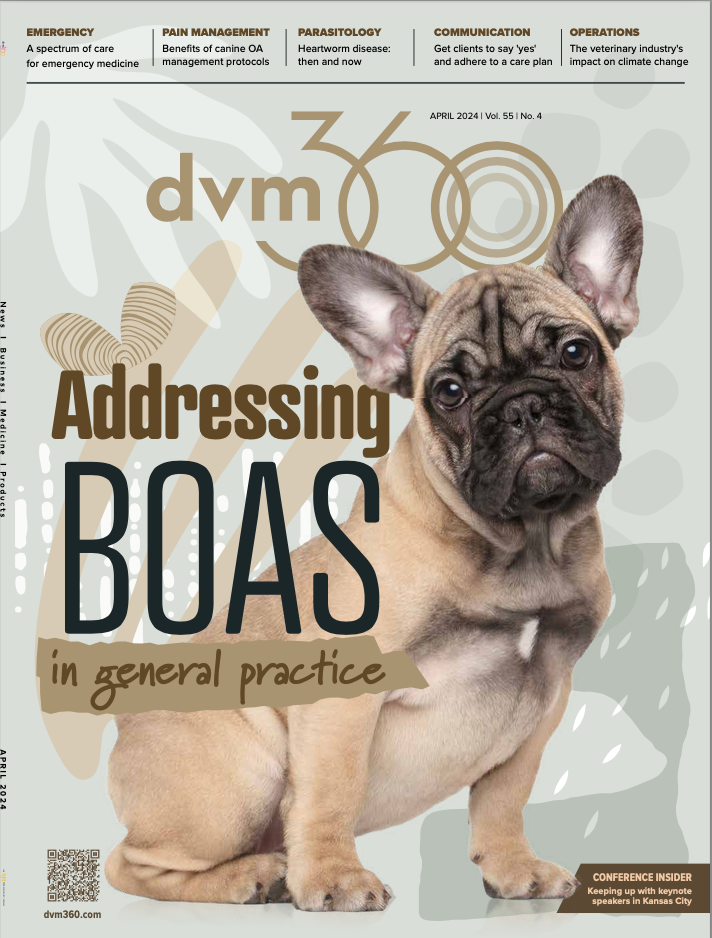Bringing a spectrum of care to emergency medicine
What can you do to give clients more options in critical care cases?
Олеся Болтенкова / stock.adobe.com

Whether it’s human medicine or veterinary medicine, emergency cases are usually unexpected. Because of its unpredictably, emergency cases also create unexpected costs for owners. Elizabeth Rozanski, DVM, DACVIM (SAIM), DACVECC, associate professor at Tufts University in Medford, Massachusetts, explained that there are options to help owners afford the cost of emergency medicine. In her session at the 2024 Midwest Veterinary Conference, Rozanski discussed the common challenges in emergency medicine and how to best approach cases when clients cannot afford a wide expanse of diagnostics and treatments.
Frustrations for emergency care team members
- Abnormal hours (overnight shifts)
- Unpredictable scheduling
- Seeing cases of preventable diseases
- Financial burden of emergency services
- Clients who can’t afford diagnostics or treatments can impede on potential solutions
“What’s our solution? It’s coming up with options that we can work with. And that’s spectrum of care. That’s emergency medicine—how we can help these people [and their pets],” Rozanski said.
Case example: Charlie
Charlie is a 9-month-old mixed breed dog who came to see Rozanski after owners noticed black bruising on his neck and reported signs of lethargy over the previous 3 days. The owners had to wait a few days before coming into the emergency department (ED) because they couldn’t find a ride to the hospital and the area lacked convenient public transportation. “They couldn’t get to see us, there was no [ED] that they could get to. They knew he had been sick for a couple of days, now he shows up and he’s bruised…What do you think is wrong with him?” Rozanski asked attendees. “Rat bait. Yeah, he ate rat bait.”
Rozanski and her emergency team noticed Charlie’s prothrombin time (PT) was out of range high which is a common effect of rat poison toxicity. Rozanski explained that a case like Charlie’s can be frustrating for veterinary professionals because it could have been preventable and could have been taken care of sooner. If Charlie was brought to the ED a few days ago, he could have easily been treated with vitamin K for a low cost. However now his case is more dire, and treatment becomes more costly because he may need a transfusion and he is at risk of euthanasia.
Yet, if we take a spectrum of care approach and take into account the owner’s limitations, we can reevaluate the situation. Rozanski explained that a lot of time with rat poison ingestion, owners don’t know if they should call the veterinary clinic. They sometimes compare it to ant bait, which is harmless, and most of the time, dogs appear to be fine shortly after ingesting rat poison. Rozanski also mentioned that some clients don’t have easy access to their primary care veterinary clinic, so it’s harder for them to decide calling the emergency clinic when they are unsure of their pet’s condition. Keeping these circumstances in mind can help reduce frustration for veterinary professionals and help support the client.
Rozanski assured attendees that, in this particular case, Charlie did recover.
Approaches for spectrum of care
Rozanski shared the following things to keep in mind when approaching a client’s unique situation with access to veterinary care:
- Veterinary practice type (primary, emergency, specialty, membership-only)
- Community (where are you located and what is the average income?)
- Presentation style (how are you presenting your veterinary care options to clients?)
- Credit options (payment plans, CareCredit, discounts, etc.)
- Treatment plans (keep the owner’s budget in mind with how aggressive treatment is)
- Insurance
“At the end of the day, if someone tells you ‘I don’t have the money for that’ then they don’t have the money for that. And then it becomes our job and our opportunity to help them figure that out. So what do you do with that? Is there a better way to pay? Do you need to be paid today or can you be paid over time? Can you make it cost less—not by not charging [for services], but by doing appropriately less tests. [For example], do you need a CBC chemistry before a spay in a cat? No, you don’t need that,” Rozanski said. Of course, doing a complete blood count doesn’t hurt and can be helpful, but this example is more for clients who specifically need to cut costs as much as possible.
Rozanski recommended being direct with clients and ask them what they are comfortable spending before starting your veterinary care. This can help everyone stay on the same page and allows you to clearly explain all their options within their limits. This also allows the client to be more prepared to pay for all the services needed at the end of the emergency visit.
As veterinary professionals, you can also give your personal recommendation to clients for what treatment you think would be best for the pet to let the client know what would be needed to properly treat a disease/condition. This way, clients are still aware of options that can offer their pet a full recovery if they have the ability to spend a little more above their budget.
However, Rozanski reminded attendees that catering to a client’s financial needs shouldn’t come at the cost of the hospital’s business and revenue. “You can do a good job and still make money…This is a business; we want to make sure we do OK. So, you have to make more money than you spend,” Rozanski said.
The end goal of better spectrum of care in emergency medicine is to reduce the amount of financial euthanasias that come from preventable or treatable cases. Rozanski stated that there is nothing more upsetting about having to euthanize an animal that could have been easily saved.
Reference
Rozanski E. Spectrum of care in emergencies. Presented at: Midwest Veterinary Conference; February 20-22, 2024.
